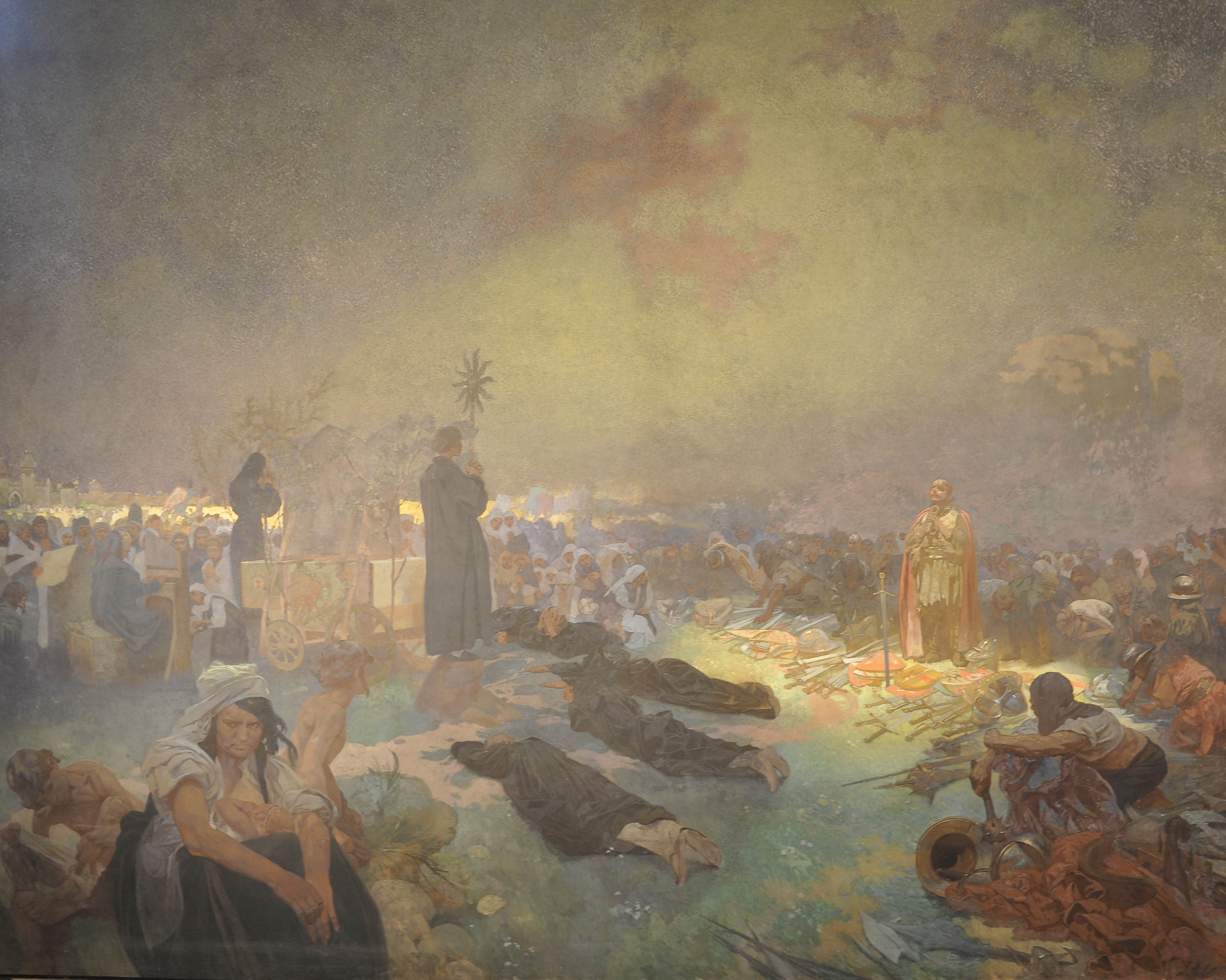AFTER THE BATTLE OF VÍTKOV HILL
One of the famous chapters in the history of the Hussite era was the Battle of Prague between the troops led by Jan Žižka of Trocnov and the army of the Roman Emperor Sigismund. Sigismund was a younger brother of King Wenceslaus IV, and after Wenceslaus's death, he laid claim to the Czech throne. The emperor's large army, composed of mercenaries hired all over Europe, besieged Prague. Žižka set out from Tábor to help the people of Prague. As an experienced military leader, he realised Vítkov hill's importance for the city's defence. He fortified a part of his forces there, but he could leave only a small garrison on the spot because his army was disproportionately weaker.
Zikmund occupied all access routes to Prague, except the road leading from the Poříčská gate under the Vítkov hill to Tábor. To ensure that Prague won't lose contact with its surroundings, Žižka built two defensive log cabins on Vítkov, protected by a small moat and surrounded by a wall. He defended this key position personally, along with twenty-six men, two women and one girl.
Sigismund's armies launched an attack on Prague on Sunday, July 14, 1420. The cavalry from Meissen and Thuringia stormed the Vítkov. With a powerful assault, the horse regiment managed to reach the log cabins, where it encountered the defenders' heroic resistance. The uneven battle raged for a long time. In this desperate situation, the people of Prague used the Poříčská gate to attack the mercenaries from behind. In the ensuing panic and confusion, the enemies fled down the steep slopes, which have proven fatal for many of them.
The painting captures the scene after Žižka and his fighters descended victoriously from the Vítkov hill. The priest from Tábor stands at the field altar and holds the host. The other priests lie on the ground in deep humility. Together they thank God for their victory. A man sitting on a wicker basket behind the altar is accompanying prayers by playing on a field organ. On the left, on the road, a young warrior bandages his wounds, and a Tábor woman breastfeeds a child, a symbol of a new generation. In the background on the left, you can see the Poříčská gate and the city walls, brightly lit by the rays of sunlight. Vítkov looms on the right. Žižka, clad in a red cloak, stands deep in thought and thanks God for this miraculous victory. In front of him lie captured weapons and equipment.

